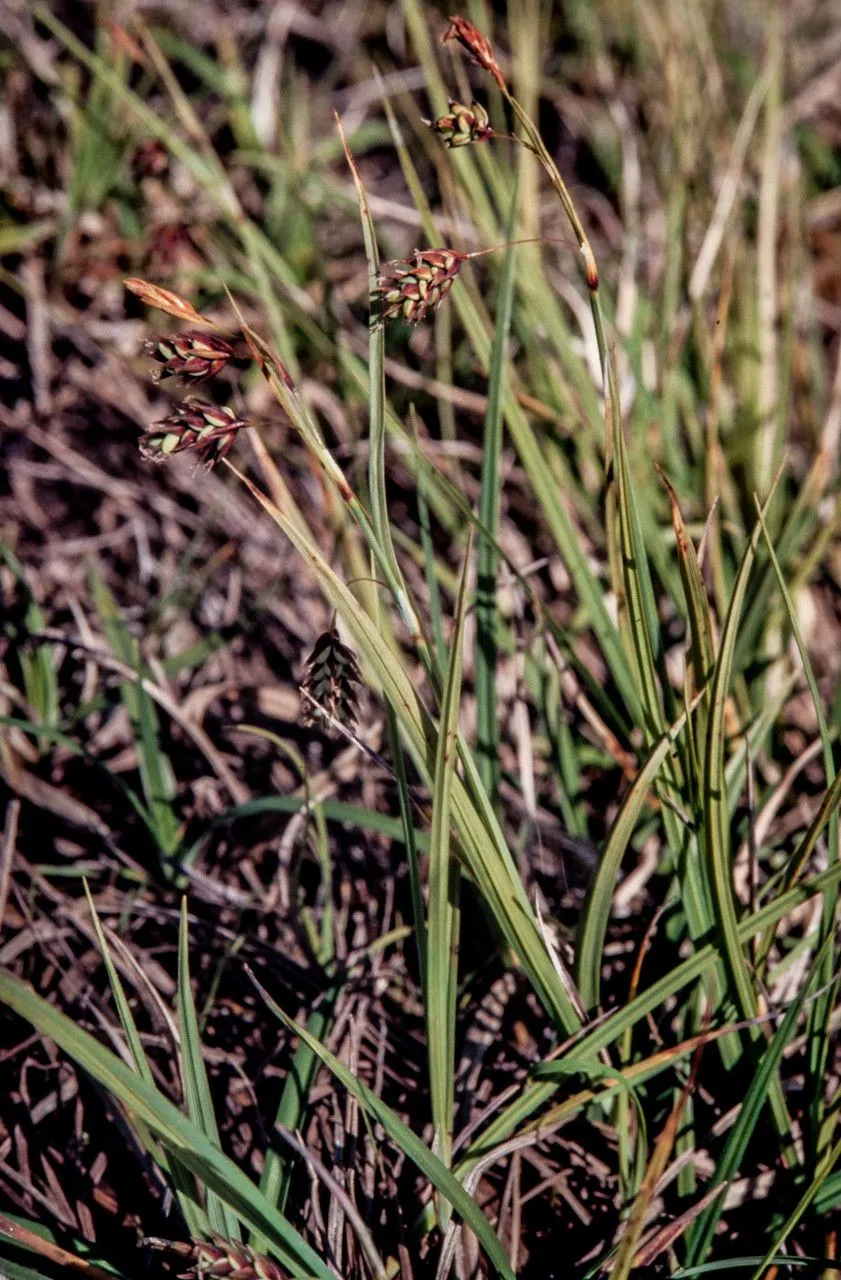
Author: Lam.
Bibliography: Encycl. 3: 385 (1792)
Year: 1792
Status: accepted
Rank: species
Genus: Carex
Vegetable: Unknown
Observations: Temp. & Subarctic Northern Hemisphere, Chile to Falkland Is.
Tall bog sedge, known scientifically as Carex magellanica, is a perennial sedge that belongs to the Cyperaceae family. This species was first described by the French naturalist Lamarck in the third volume of his encyclopedia, published in 1792.
Carex magellanica can be found in temperate and subarctic regions of the Northern Hemisphere, where it thrives in boggy, wetlands, and other low-nutrient environments. Its geographical distribution also extends to the Southern Hemisphere, specifically from Chile to the Falkland Islands, further highlighting its adaptability to diverse climates and locations.
The tall bog sedge is notable for its grass-like appearance, forming dense clusters of slender, green stalks that can reach varying heights, depending on the habitat conditions. Its foliage is typically narrow, elongated, and pointed, providing an elegant, grass-like texture to the areas it inhabits.
Ecologically, Carex magellanica is significant for its role in maintaining the health and stability of wetland ecosystems. It offers valuable ground cover that helps prevent soil erosion, retains moisture, and supports a myriad of other plant and animal species adapted to wetland life. Additionally, the tall bog sedge contributes to the preservation of biodiversity by creating a unique niche within its habitat.
Botanists and ecologists often reference this species when studying wetland ecosystems, given its wide distribution and ecological importance. Whether you encounter it in the cooler climates of the Northern Hemisphere or the temperate regions extending to the Falkland Islands, Carex magellanica stands as a resilient and crucial component of its natural environment.
Eng: boreal bog sedge, tall bog sedge, tall bog-sedge, bog sedge, little sedge, poor bog sedge, poor sedge, stunted sedge
Pol: turzyca patagonska
Fra: carex de magellan
Swe: sumpstarr
Cym: hesgen eurwerdd lefn
En: Tall bog sedge, Boreal bog sedge, Boreal-Bog Sedge, Tall Bog-sedge, Bog Sedge, Little sedge, Poor bog sedge, Poor sedge, Stunted sedge
Cs: Ostřice vrchovištní
Nl: Poolzegge
Fi: Riippasara
Fr: Carex de Magellan, Carex de Patagonie, Laiche de Magellan, Laîche de Magellan, Laiche de Patagonie, Laîche de Patagonie
De: Magellans-Segge, Patagonische Segge
It: Carice dello stretto di Magellano
Pl: Turzyca patagonska
Sv: Sumpstarr
Cy: Hesgen eurwerdd lefn
Taken Jul 15, 2010 by Photoflora – Benoit BOCK (©)
Taken Oct 14, 2015 by EOL − Erica Fraley (cc-by-nc)
Taken Jan 1, 1900 by EOL − Encyclopedia of Life (cc-by-nc)
Taken Jul 17, 1997 by Andrew Gagg (cc-by-sa)
Taken Jul 17, 1997 by Andrew Gagg (cc-by-sa)
Taken Jan 1, 1900 by EOL − Encyclopedia of Life (cc-by-nc)
Taken Jan 1, 1900 by EOL − Encyclopedia of Life (cc-by-nc)
Taken Jan 1, 1900 by EOL − Encyclopedia of Life (cc-by-nc)
Taken Jan 1, 1900 by EOL − Encyclopedia of Life (cc-by-nc)
Taken Jul 17, 1997 by Andrew Gagg (cc-by-sa)
Taken Jul 15, 2003 by Photoflora – Jean-Luc TASSET (©)
Taken Jul 15, 2003 by Photoflora – Jean-Luc TASSET (©)
Taken Jan 1, 1900 by EOL − Encyclopedia of Life (cc-by-nc)
Taken Jan 1, 1900 by EOL − Encyclopedia of Life (cc-by-nc)
Taken Jun 19, 2000 by Tela Botanica − Liliane Roubaudi (cc-by-sa)
Taken Jul 15, 2010 by Photoflora – Benoit BOCK (©)
Taken Jul 15, 2010 by Photoflora – Benoit BOCK (©)
Taken Jul 15, 2010 by Photoflora – Benoit BOCK (©)
Taken Jul 15, 2010 by Photoflora – Benoit BOCK (©)
Taken Jan 1, 1970 by Photoflora – L’Abbé COSTE (©)
Taken Jan 1, 1900 by EOL − Encyclopedia of Life (cc-by-nc)
Family: Myrtaceae Author: (F.Muell.) K.D.Hill & L.A.S.Johnson Bibliography: Telopea 6: 402 (1995) Year: 1995 Status:…
Family: Rubiaceae Author: Pierre ex A.Froehner Bibliography: Notizbl. Bot. Gart. Berlin-Dahlem 1: 237 (1897) Year:…
Family: Sapindaceae Author: Koidz. Bibliography: J. Coll. Sci. Imp. Univ. Tokyo 32(1): 38 (1911) Year:…
Family: Asteraceae Author: A.Gray Bibliography: Pacif. Railr. Rep.: 107 (1857) Year: 1857 Status: accepted Rank:…
Family: Fabaceae Author: Medik. Bibliography: Vorles. Churpfälz. Phys.-Ökon. Ges. 2: 398 (1787) Year: 1787 Status:…
Family: Aspleniaceae Author: (Cav.) Alston Bibliography: Bull. Misc. Inform. Kew 1932: 309 (1932) Year: 1932…